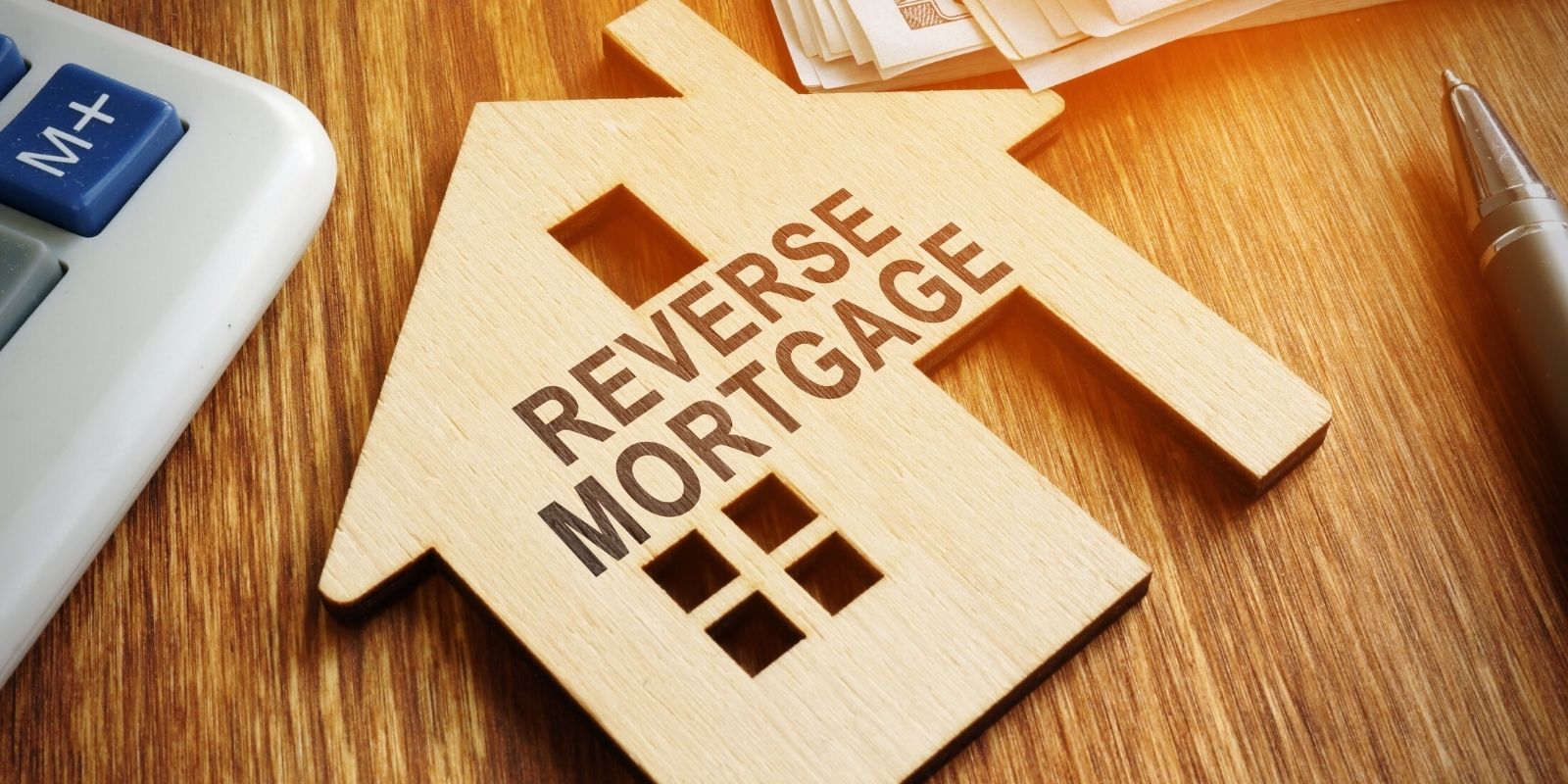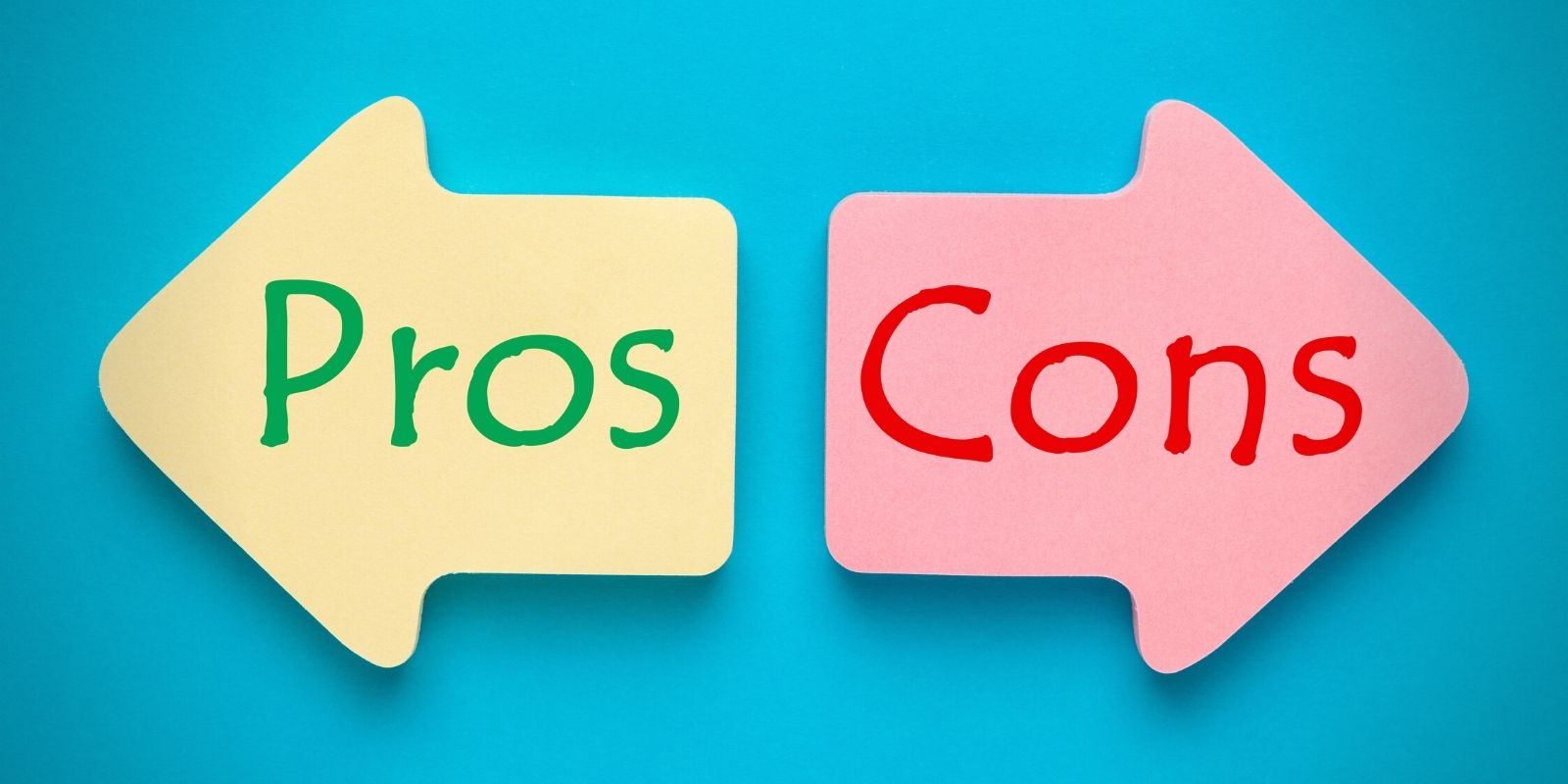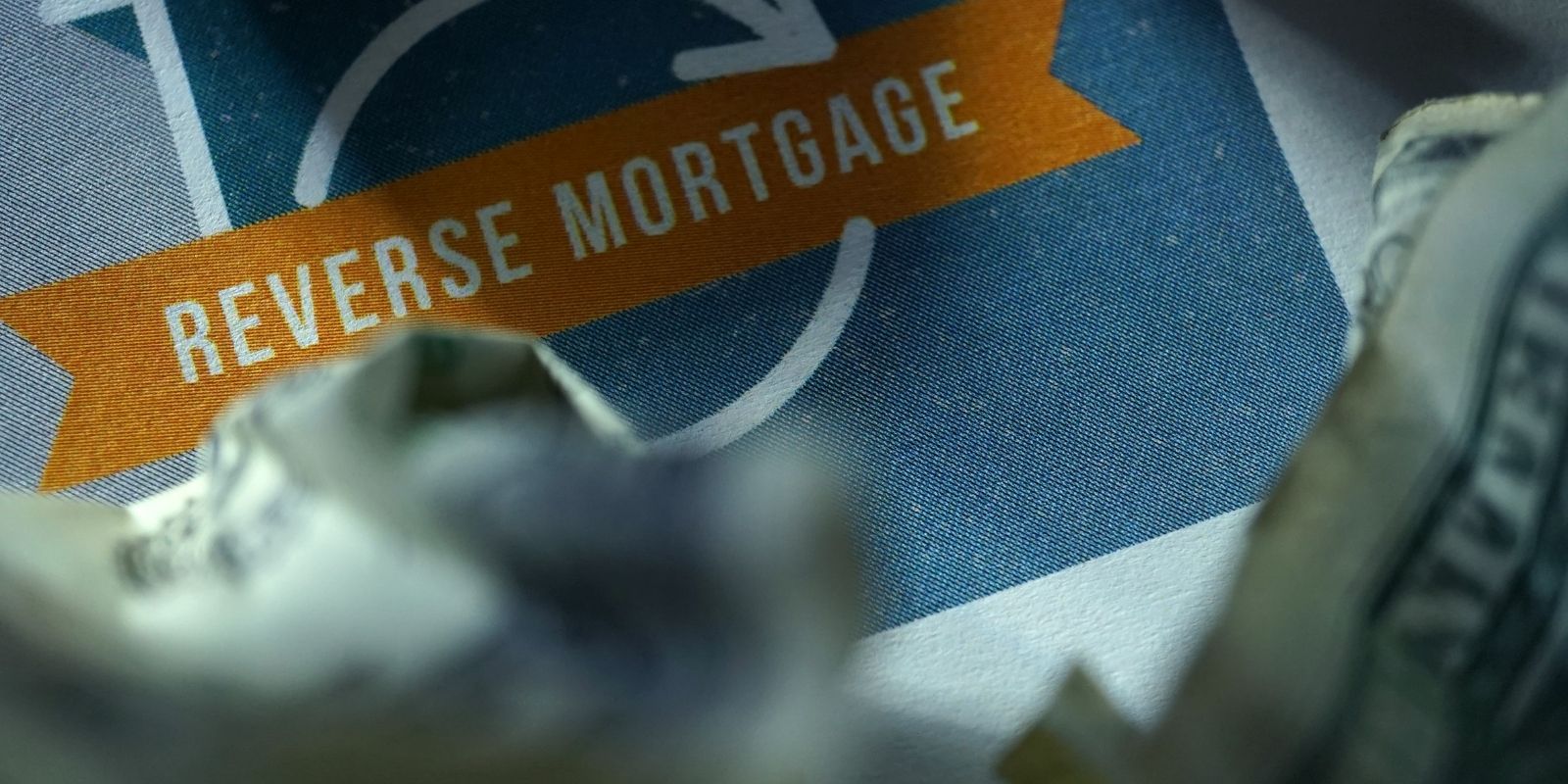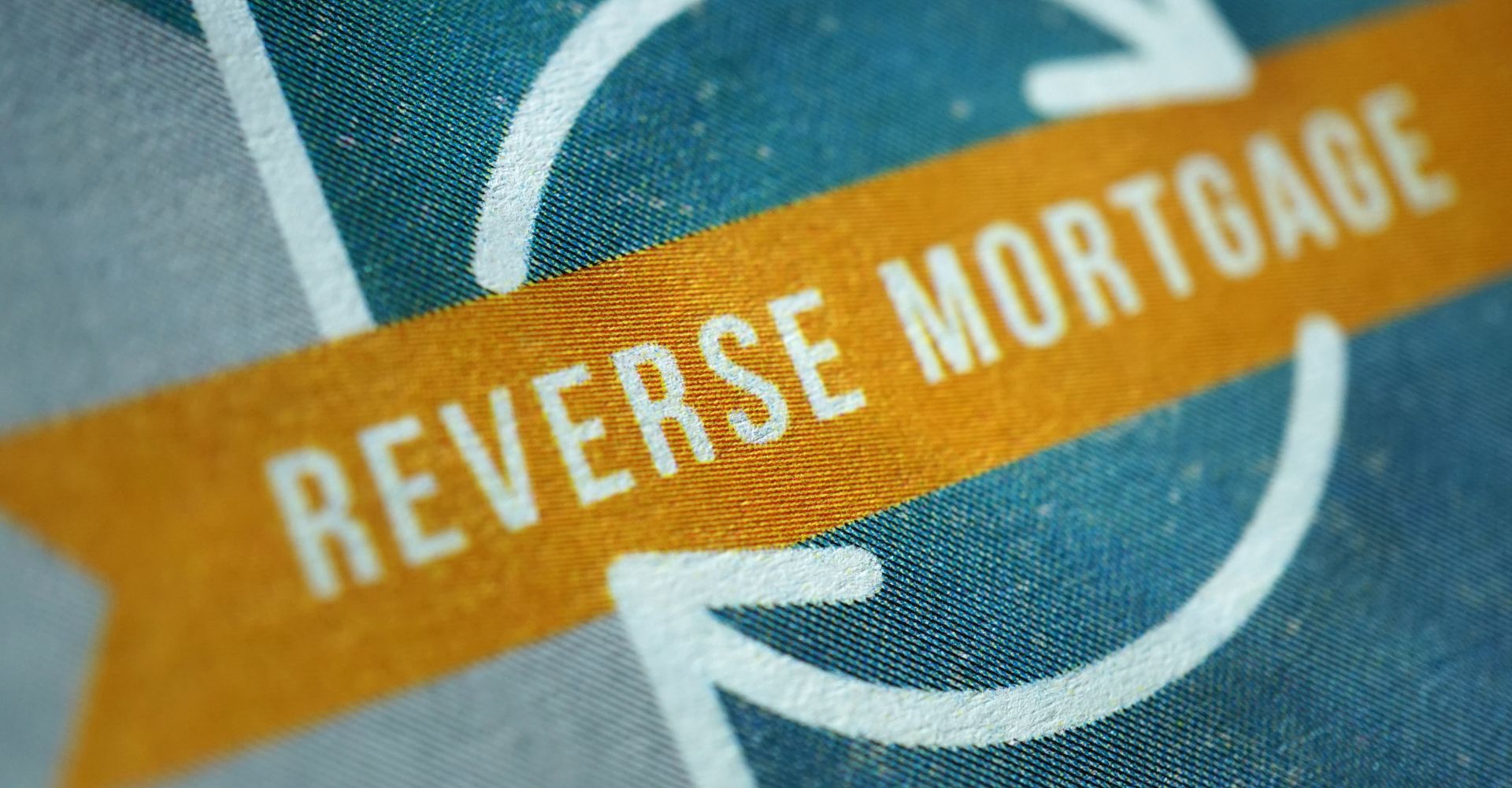A reverse mortgage is a loan that allows homeowners to borrow against the equity in their home.
The loan can be used for any purpose, such as retirement, home improvements, or debt consolidation.
A reverse mortgage loan does not have to be repaid until the homeowner moves, sells the home, or dies.
Reverse mortgages are available to homeowners age 62 and older.
The amount you can borrow depends on your age, the value of your home, and how much equity you have in your home.
You can choose to receive a lump sum, regular payments, or a line of credit.
The interest on a reverse mortgage is usually higher than on a traditional mortgage.
However, the interest may be tax-deductible.
And because you are not required to make monthly payments, a reverse mortgage can provide you with more flexibility than a traditional mortgage.
In this article, we’ll explore how reverse mortgages work, the different types of reverse mortgages, eligibility requirements, how to avoid scams, and more.

How do Reverse Mortgages Work?
A reverse mortgage is a special type of loan that allows homeowners to borrow against the value of their home.
Unlike a traditional mortgage, there is no monthly payment required and the loan does not need to be repaid until the homeowner sells the home or dies.
The amount that can be borrowed depends on the age of the homeowner, the value of the home, and current interest rates.
There are three types of reverse mortgages: single-purpose, home equity conversion mortgages (HECMs), and proprietary reverse mortgages.
Single-purpose reverse mortgages are offered by certain state and local governments and can only be used for specific purposes, such as home repairs or paying off debt.
HECMs are insured by the Federal Housing Administration (FHA) and are available to all homeowners 62 years or older.
Proprietary reverse mortgages are offered by private companies and are available to all homeowners, regardless of age.
The biggest advantage of a reverse mortgage is that it allows seniors to stay in their homes longer.
It can also provide them with a steady stream of income that can be used for any purpose, including retirement savings, health care expenses, and long-term care costs.
However, there are some risks associated with reverse mortgages, including the possibility that the homeowner will outlive the value of the loan or that interest rates will rise significantly.
It is important to consult with a financial advisor before deciding if a reverse mortgage is right for you.
What are the Costs of a Reverse Mortgage?
Reverse mortgages come with costs just like any other mortgage.
The most obvious cost is the interest rate, which is usually higher than a traditional mortgage.
This is because the lender is taking on more risk by lending to someone who is already in retirement.
Another cost is the mortgage insurance premium.
This protects the lender in case the borrower defaults on the loan.
The premium can be quite expensive, depending on the size of the reverse mortgage and the age of the borrower.
In addition to these costs, lenders also will charge their own origination fees, which vary by lender, but typically range from 1% to 2% of the loan amount.
Lenders also typically charge other fees, including for home appraisals, servicing/administering loans, and other closing costs, such as credit check fees.
However, all costs are typically rolled into the balance of the mortgage, so you don’t need to pay them out of pocket.
It’s important to understand these costs before taking out a reverse mortgage.
These costs can be mitigated by shopping around for the best deal.
By comparison shopping, you can find a reverse mortgage that has interest rates and mortgage insurance premiums that fit your budget.
Reverse Mortgage Interest Rates
Only the lump sum (single disbursement) reverse mortgage, which gives you all of the proceeds at once when your loan closes, has a fixed interest rate.
The other five options have adjustable interest rates, which makes sense since you’re borrowing money over many years, not all at once, and interest rates are always changing.
Variable-rate reverse mortgages are tied to a benchmark index, often the Constant Maturity Treasury (CMT) index.
In addition to one of the base rates, the lender adds a margin of one to three percentage points.
So if the index rate is 2.5% and the lender’s margin is 2%, then your reverse mortgage interest rate will be 4.5%.
Interest compounds over the life of the reverse mortgage, and your credit score does not affect your reverse mortgage rate or your ability to qualify.
Although it does affect whether the lender may require a Life Expectancy Set Aside account for your property taxes, homeowners insurance, and other required property charges.
How Much Can Your Borrow With a Reverse Mortgage?
The amount that you can borrow will be determined by your lender and payment plan, as well as the age of the youngest borrower and the interest rate on your HECM.
The maximum claim amount for an FHA-backed reverse mortgage is $970,800 as of Jan. 1, 2022; however, you may not borrow 100% of what your property is worth or anywhere close to it.
Mortgage premiums and interest must be paid in part with equity from your home.
Here are a few other things that you need to know about how much you can borrow:
- The loan proceeds are based on the age of the youngest borrower or, if the borrower is married, the younger spouse, even if the younger spouse is not a borrower. The older the youngest borrower is, the higher the loan proceeds.
- The lower the mortgage rate, the more you can borrow.
- The higher your property’s appraised value, the more you can borrow.
- A strong reverse mortgage financial assessment increases the proceeds that you’ll receive because the lender won’t withhold part of them to pay property taxes and homeowners insurance on your behalf.
The initial principal limit is the amount you can borrow for the first year.
The federal government reduced this in October 2017, making it harder for homeowners, particularly younger ones, to qualify for a reverse mortgage.
On the plus side, the change helps borrowers keep more of their equity.
Because household insurance rates had nearly doubled over last fiscal year’s deficit in the mortgage insurance fund (MIF), the government lowered its limit as well.
This is what reimburses lenders and protects taxpayers from reverse mortgage losses.
To further complicate things, you can’t borrow all of your initial principal limit in the first year when you choose a lump sum or a line of credit.
Instead, you can borrow up to 60%, or more if you’re using the money to pay off your forward mortgage.
If you choose a lump sum, the amount that you get upfront is all you will ever get.
If you choose the line of credit, then your credit line will grow over time, but only if you have unused funds in your line.

Types of Reverse Mortgages
As you consider whether a reverse mortgage is right for you, also consider which of the three types of reverse mortgages might best suit your needs.
Single-Purpose Reverse Mortgage
Single-purpose reverse mortgages are the least expensive option.
They’re offered by some state and local government agencies, as well as non-profit organizations, but they’re not available everywhere.
These loans may be used for only one purpose, which the lender specifies.
For example, the lender might say the loan may be used only to pay for home repairs, improvements, or property taxes.
Most homeowners with a low or moderate income can qualify for these loans.
Home Equity Conversion Mortgage
Home Equity Conversion Mortgages (HECMs) are federally-insured reverse mortgages and are backed by the U. S. Department of Housing and Urban Development (HUD).
HECM loans can be used for any purpose.
HECMs and proprietary reverse mortgages may be more expensive than traditional home loans, and the upfront costs can be high.
That’s important to consider, especially if you plan to stay in your home for just a short time or borrow a small amount.
How much you can borrow with a HECM or proprietary reverse mortgage depends on several factors:
- Your age
- Type of reverse mortgage you select
- Appraised value of your home
- Current interest rates
- A financial assessment of your willingness and ability to pay property taxes and homeowner’s insurance
In general, the older you are, the more equity you have in your home, and the less you owe on it, the more money you can get.
Before applying for a HECM, you must meet with a counselor from an independent government-approved housing counseling agency.
Some lenders offering proprietary reverse mortgages also require counseling.
The counselor is required to explain the loan’s costs and financial implications.
The counselor also must explain the possible alternatives to a HECM – like government and non-profit programs, or a single-purpose or proprietary reverse mortgage.
The counselor also should be able to help you compare the costs of different types of reverse mortgages and tell you how different payment options, fees, and other costs affect the total cost of the loan over time.
You can visit HUD for a list of counselors, or call the agency at 1-800-569-4287.
Counseling agencies usually charge a fee for their services, often around $125.
This fee can be paid from the loan proceeds, and you cannot be turned away if you can’t afford the fee.
With a HECM, there generally is no specific income requirement.
However, lenders must conduct a financial assessment when deciding whether to approve and close your loan.
They’re evaluating your willingness and ability to meet your obligations and the mortgage requirements.
Based on the results, the lender could require funds to be set aside from the loan proceeds to pay things like property taxes, homeowner’s insurance, and flood insurance (if applicable).
If this is not required, you still could agree that your lender will pay for these items.
If you have a “set-aside” or you agree to have the lender make these payments, those amounts will be deducted from the amount you get in loan proceeds.
You are still responsible for maintaining the property.
The HECM lets you choose among several payment options:
- Single disbursement option – this is only available with a fixed rate loan, and typically offers less money than other HECM options.
- “Term” option – fixed monthly cash advances for a specific time.
- “Tenure” option – fixed monthly cash advances for as long as you live in your home.
- Line of credit – this lets you draw down the loan proceeds at any time, in amounts you choose, until you have used up the line of credit. This option limits the amount of interest imposed on your loan, because you owe interest on the credit that you are using.
- Combo – a combination of monthly payments and a line of credit.
You may be able to change your payment option for a small fee.
HECMs generally give you bigger loan advances at a lower total cost than proprietary loans do.
In the HECM program, a borrower generally can live in a nursing home or other medical facility for up to 12 consecutive months before the loan must be repaid.
Taxes and insurance still must be paid on the loan, and your home must be maintained.
With HECMs, there is a limit on how much you can take out the first year.
Your lender will calculate how much you can borrow, based on your age, the interest rate, the value of your home, and your financial assessment.
This amount is called your “initial principal limit.”
Generally, you can take out up to 60 percent of your initial principal limit in the first year.
Proprietary Reverse Mortgage
Proprietary reverse mortgages are private loans that are backed by the companies that develop them.
If you own a higher-valued home, you may get a bigger loan advance from a proprietary reverse mortgage.
So if your home has a higher appraised value and you have a small mortgage, you might qualify for more funds.

Who can Take out a Reverse Mortgage?
A reverse mortgage might sound a lot like a home equity loan or a home equity line of credit (HELOC).
Indeed, similar to one of these loans, a reverse mortgage can provide a lump sum or a line of credit that you can access as needed, based on how much of your home you’ve paid off and your home’s market value.
But unlike a home equity loan or a HELOC, you don’t need to have an income or good credit to qualify, and you won’t make any loan payments while you occupy the home as your primary residence.
A reverse mortgage is the only way to access home equity without selling the home for seniors who:
- Don’t want the responsibility of making a monthly loan payment
- Can’t afford a monthly loan payment
- Can’t qualify for a home equity loan or cash-out refinance because of limited cash flow or poor credit
Of course, those seniors could still tap into other types of loans.
Unsecured personal loans, for instance, can provide a lump sum of cash without using the home as collateral.
However, that type of loan would require monthly repayment.

What’s Required for a Reverse Mortgage?
Reverse mortgages aren’t good for everyone.
Only certain borrowers qualify and their structure also only makes them appropriate for certain borrowers.
Below we’ll take a look at what exactly is required to be eligible for a reverse mortgage.
Age, Equity, and Fees
Reverse mortgages do not have income or credit score requirements, yet there are criteria for who is eligible.
You must be at least 62 years old and own your home or have a large amount of equity (at least 50%).
An origination fee, an up-front mortgage insurance premium, other standard closing costs, ongoing mortgage insurance premiums (MIPs), loan servicing fees (sometimes), and interest will all need to be paid.
The federal government sets limits on how much lenders may charge for several of these services.
Property Type
You may be eligible for a reverse mortgage if you own property, such as a house, townhouse, condominium, or manufactured home built on or after June 15, 1976.
Under FHA rules, cooperative housing owners are not allowed to take out reverse mortgages since they do not truly own the real estate in which they reside: instead, they have shares in a corporation.
Reverse mortgages are expressly prohibited in co-ops by state legislation in New York.
However, they can be taken out on one- to four-family homes and condos.
Counseling
A reverse mortgage can be a great retirement tool, but it’s important to take the time to understand what you’re getting into.
As part of this process, all prospective borrowers must partake in a HUD-approved counseling session lasting at least 90 minutes and costing around $125.
During the informative talk, you’ll receive impartial advice about how your personal finances could be affected by entering into such an agreement as well as potential impacts on Medicaid or SSI eligibility.
Furthermore, there are several different ways for receiving proceeds from a reverse mortgage – these will also be discussed during the session
Collateral Protection
If you’ve obtained a reverse mortgage for your home, there are several key responsibilities to be aware of.
It’s essential that taxes and insurance payments remain up-to-date and the property is well maintained so as not to disrupt loan terms.
If you happen to be away from home for an extended time period – even due to medical-related reasons – repayment will likely involve selling the house.

How to Avoid Reverse Mortgage Scams
Reverse mortgages are a popular option for seniors looking to boost retirement income and access their home equity.
While government-backed reverse mortgages provide sound security, it’s important to be wary of other lenders offering this service—especially those making the claim that they broker on behalf of governmental loans.
You should research any lender before signing up for any loan agreement or committing yourself financially!
Here are some things to look out for, according to the FBI:
- Don’t respond to unsolicited mailers or other ads
- Don’t sign documents if you don’t understand them—consider having them reviewed by an attorney
- Don’t accept payment for a home you don’t own
- Be wary of anyone who says you can get something for nothing (i.e., no down payment)
In many cases, these scams get unwitting homeowners to take out reverse mortgages and give the money to the scammer.
In other cases, scams try to force homeowners to take out reverse mortgages at onerous interest rates or with hidden terms that can cause the borrower to lose their property.
Below are two of the most common reverse mortgage scams:
Contractor “loans” – Some contractors will try to convince you to get a reverse mortgage when touting home improvement services.
Veteran “loans” – The U.S. Department of Veterans Affairs (VA) doesn’t provide reverse mortgages, but you may see ads promising special deals for veterans, such as a fee-free reverse mortgage to attract borrowers.
The best way to avoid a reverse mortgage scam is to be aware and vigilant.
If an individual or company is pressuring you to sign a contract, for example, it’s a red flag.

Reverse Mortgage Pros & Cons
While borrowing against your home equity can free up cash for living expenses, the mortgage insurance premium and origination and servicing fees can add up. Here are the advantages and disadvantages of a reverse mortgage.
Pros: Advantages of a Reverse Mortgage
- You can add to your retirement income. If you choose to receive payouts from your reverse mortgage on a monthly basis, you’ll have a reliable flow of cash in your budget.
- You can stay in your home longer. The flexible options for tapping equity give you more ways to meet changing financial needs as you get older. For example, making home improvements to age in place with a reverse mortgage may be more affordable than selling and downsizing your home.
- Your spouse can stay in the home after you die or move out. Even if your spouse wasn’t a co-borrower on the loan, they can stay in the home after you die or move into a long-term care facility — if you were married at the time you took out the reverse mortgage. However, they must meet certain conditions set by the U.S. Department of Housing and Urban Development (HUD).
- You can leave other retirement accounts alone. Drawing income from a reverse mortgage may help you avoid early withdrawal penalties from other accounts in your retirement portfolio.
- You can pay off debt. If you have unpaid medical bills or high-interest debt, you can pay off your balances with a lump-sum distribution.
- You don’t have to meet debt-to-income (DTI) ratio requirements. No mortgage payment means less income is needed to qualify. However, a lender will need to verify that you can maintain your property taxes, homeowners insurance, and if applicable, homeowners association (HOA) payments.
- You’ll have more financial freedom. You can use reverse loan funds however you’d like, giving you the flexibility to do what’s important to you and your family. You can help a child out with college tuition or renovate your home to meet special needs as you or a loved one ages.
- Your reverse income is not taxed. The IRS doesn’t consider reverse mortgage payments as income, so they aren’t taxable — regardless of whether you receive them as a lump sum, monthly income, line of credit, or any combination of the three.
- You won’t leave an underwater home to your heirs. Reverse loans have built-in protections that limit your heirs’ responsibility for any remaining balance after you die.
Cons: Disadvantages of a Reverse Mortgage
- You may be disqualified from other income benefits. Consult with a financial planner or attorney before you decide how to receive your funds. Why? Your eligibility for Supplemental Security Income (SSI) or Medicaid may be impacted if you receive reverse loan funds.
- Your home’s equity will shrink. A big downside to reverse mortgages is the loss of home equity. Because you’re not paying down your reverse mortgage balance, you’ll make less profit when you sell, or limit your borrowing power if you need a new loan.
- You’ll pay high upfront fees. With loan origination fees up to $6,000, upfront mortgage insurance premiums worth 2% of your home’s value and other closing costs, reverse mortgages are more expensive than other home loan types.
- You won’t get a tax benefit while the loan is in place. The interest on a reverse mortgage isn’t tax-deductible until all or part of the balance is repaid.
- You’ll reduce your heirs’ inheritance. As a reverse mortgage balance grows, the equity your heirs would receive is diminished. If they can’t repay the loan when you pass away or move, they won’t be able to keep the home.
- You might lose your home to foreclosure. You’re still responsible for paying property taxes and insurance, and if you default on your property taxes, you could lose your home to tax foreclosure. A reverse mortgage lender can foreclose on the home if you’re not living in it for more than 12 consecutive months due to health care issues.
- You can’t use a reverse loan for investment or vacation homes. You must prove you’re living in the home that you’re financing to qualify for a reverse mortgage.

Alternatives to a Reverse Mortgage
If you haven’t yet reached the age of 62 and are looking for ways to access your home’s equity, consider a Home Equity Loan or a HELOC (Home Equity Line of Credit).
The main difference is that with a regular loan you need to start making payments right away but with a HELOC payment does not begin until after the draw period ends.
Both provide great upfront benefits such as lower closing costs and competitive interest rates compared with reverse mortgages – plus they allow you to borrow up 80-85% of your property value!
Aside from a home equity loan, you could also consider:
- Cutting expenses – Trimming discretionary expenses can help you stay in your home long-term. If you need help with a necessary bill, consider contacting a local assistance organization (the Administration for Community Living can help you find one), which may be able to assist with fuel payments, utility bills, and needed home repairs.
- Downsizing – If you’re able and willing to move, selling your home and moving to a smaller, less expensive one can give you access to your existing home’s equity. You can use the proceeds of the sale to pay for another house in cash or pay off other debt.
- Refinancing – If you haven’t paid off your mortgage yet, you could look into refinancing the loan to lower your monthly payments and free up the difference. Make sure to weigh the closing costs and the new loan terms, however, to see how these will affect your finances in your retirement years.

Reverse Mortgage FAQs
Below we’ve outlined some of the most frequently asked questions about reverse mortgages along with their corresponding answers.
Can You Owe More Than Your Home is Worth With a Reverse Mortgage?
Your loan balance could grow higher than your home’s value
Lenders can’t go after borrowers or their heirs if the home turns out to be underwater when the loan is due.
The mortgage insurance premiums that borrowers pay go into a fund that covers lenders’ losses when this happens.
When do You Have to Repay a Reverse Mortgage?
The lender will require the borrower to repay the reverse mortgage if the borrower does any of these things:
- Sells the home
- Resides outside the home for more than a year
- Passes away
- Fail to maintain the property
- Stops paying your homeowner’s insurance premiums or property taxes
There are some exceptions to these rules for eligible non-borrowing spouses who want to keep living in the home after their borrowing spouse passes away.
Can You Refinance a Reverse Mortgage?
Yes, you can refinance a reverse mortgage.
Because of the origination fee, upfront mortgage insurance premium, and other closing costs, refinancing a reverse mortgage should be reserved for situations like:
- A spouse needs to be added to the loan
- More equity is needed
- The interest rate can be lowered substantially

Wrapping up our Guide to Reverse Mortgages
Now that you know all about how reverse mortgages work, who is eligible to take one out, and what the requirements are, as well as the pros and cons of getting a reverse mortgage, you can decide if this financial product is right for you.
If you’re considering taking out a reverse mortgage and would like to speak with an agent, our team here at Helen Painter’s would be happy to help answer any questions you may have.
Contact us today and we’ll be glad to assist you further.

